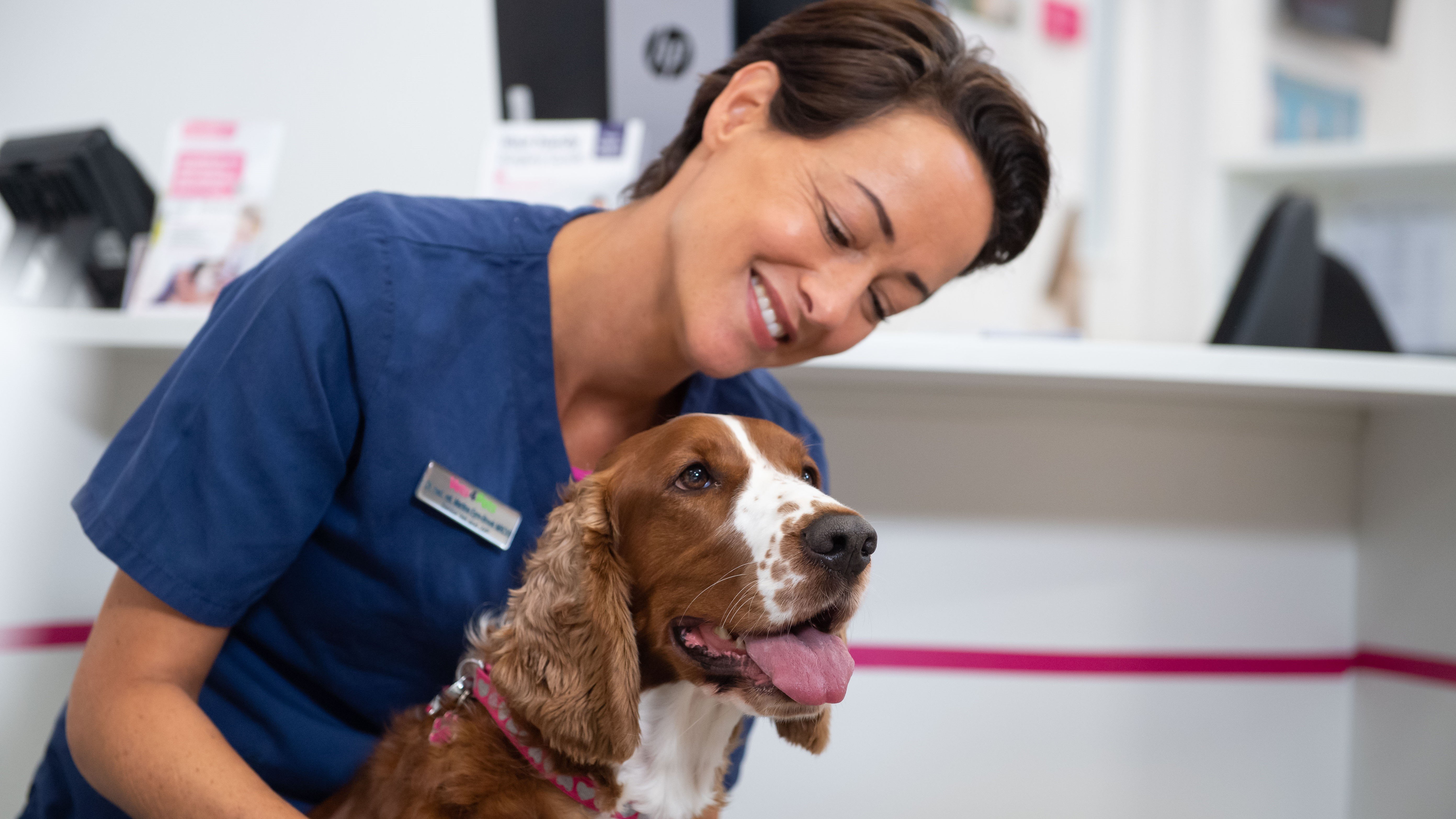
Conjunctivitis in dogs
Our dogs depend on their eyes just as much as we do. Here we look at the tell-tale signs of conjunctivitis and consider how it’s treated.
What is conjunctivitis?
‘Conjunctivitis’ means inflammation of the conjunctiva. This is the thin tissue that lines the whites of the eyes and the inside of the eyelids. Conjunctivitis is sometimes known as ‘pink eye’ or 'red eye'.
What does conjunctivitis look like?
Inflammation of the conjunctiva causes redness of the tissue around the eye – the white of the eye may look pink and the eyelids can become reddened and swollen.
 There may be increased blinking or squinting.
There may be increased blinking or squinting.
Mucus might build up in the corner of the eyes and you may notice their eyes are running.
Your pet may paw at their eyes or rub their face on carpets, sofas etc.
Conjunctivitis often affects both eyes although, depending on the cause, it can be seen in just one.
What should I do if I think my dog has conjunctivitis?
If you suspect your dog may have conjunctivitis, then you'll need to speak to your local vet.
Uncomplicated bacterial conjunctivitis is usually straight forward to manage.
However, conjunctivitis might be a sign of more serious eye issues, so ensure you arrange for your pet to be examined by your vet. Early diagnosis and treatment will reduce the chances of more severe problems developing.
Conjunctivitis FAQ's
There are multiple causes. Bacterial infection is a common cause of uncomplicated conjunctivitis, especially in dogs. Unvaccinated cats are at a higher risk of viral conjunctivitis which looks similar to bacterial infections.
Any process that causes inflammation of the conjunctiva is classed as conjunctivitis and can include injury, allergies, dry eyes, foreign bodies and abnormalities to the structure of the eye itself.
Although conjunctivitis can happen in healthy eyes, an eye that is already affected by another problem is more susceptible to conjunctivitis.
Dogs with allergies are more prone to conjunctivitis, especially when they experience a flare-up.
Pets can also experience ‘dry eye’, where insufficient tears are produced. This means the eyes are not lubricated as well as normal, thus increasing the risk of developing conjunctivitis.
Simple conjunctivitis is often treated with eye drops or ointment from your vet. These can be tricky to administer, so ask your vet or follow the link below for some techniques for giving eye treatment to your pet.
If your pet is at higher-than-normal risk of experiencing conjunctivitis (e.g. they have seasonal allergies), gently wipe their eyes with cooled, boiled water following walks or after sleeping.
However, just as in humans, there is no fool proof way of completely preventing conjunctivitis so speak to your vet if you have any questions.
Health Plans to keep your dog healthy
At Vets4Pets we offer a range of Health Plans that make essential routine treatments more affordable. You'll save money on things like annual vaccinations, flea and worm treatment and routine health check-ups.

Dog Advice
Read more of our expert dog advice to keep your dog happy and healthy.
